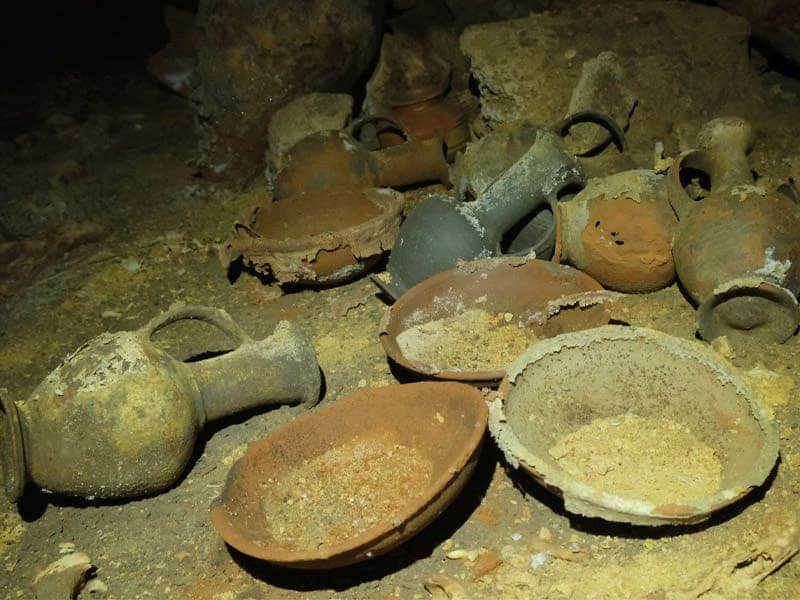A “once-in-a-lifetime” discovery has been made at the Palmahim national park in Israel — a burial cave filled with pottery and bronze artifacts sealed during the time that Pharaoh Rameses II was ruling in Ancient Egypt.

The cave was discovered last Tuesday on a Mediterranean beach in the Palmahim national park, about ten kilometers south of the Tel Aviv area, by surprise. Construction workers were plying their trade at the site when a mechanical digger broke through its roof. Archeologists were called to the site and soon followed the digger, using a ladder to descend into what turned out to be a large, man-made square cave.
Soon, they were shining their flashlights on dozens of carefully laid-out earthenware pots of various shapes and sizes, bowls filled with offerings, chalices, cooking pots, jars, lamps, and bronze arrowheads and spear tips. They had all lain untouched for some 3,300 years.
Treasure trove
The artifacts were burial offerings meant to accompany the individual entombed here on their journey through to the afterlife and beyond. A video released by the Israel Antiquities Authority (IAA) records the artifacts as they were discovered by archeologists first reaching down into the burial cave.
At least one relatively intact skeleton was also discovered in one of the two rectangular plots in a corner of the cave.
“The fact that these people were buried along with weapons, including entire arrows, shows that these people might have been warriors, perhaps they were guards on ships—which may have been the reason they were able to obtain vessels from all around the area,” says IAA archaeologist David Gelman.
According to early dating estimates, the cave and artifacts hail from the time of Egyptian pharaoh Ramesses II. During his reign, which lasted from 1279 B.C. to 1213 B.C., Ancient Egypt ruled the lands that are today Israel, where the cave was discovered. This is reflected in the artifacts discovered at the cave, as some of them were not of local make. Some of the pottery found here was manufactured in Syria, Lebanon, or Cyprus, standing testament to the complexities of local trade networks even so far in Antiquity.
For now, the cave has been resealed and placed under guard until the IAA can decide on how to best move forward. Burial caves are a rare occurrence and finding one that is completely untouched is much rarer still — so the IAA wants to make sure that the discovery is well preserved for the future.
“It feels like something out of an Indiana Jones movie: just going into the ground and everything is just laying there as it was initially -– intact pottery vessels, weapons, vessels made out of bronze, burials just as they were,” says Gelman.
Although placing the cave under guard might seem like an extreme and unneeded step, the IAA explains that “a few items” had been looted from the site in the short time between its discovery and closure.


